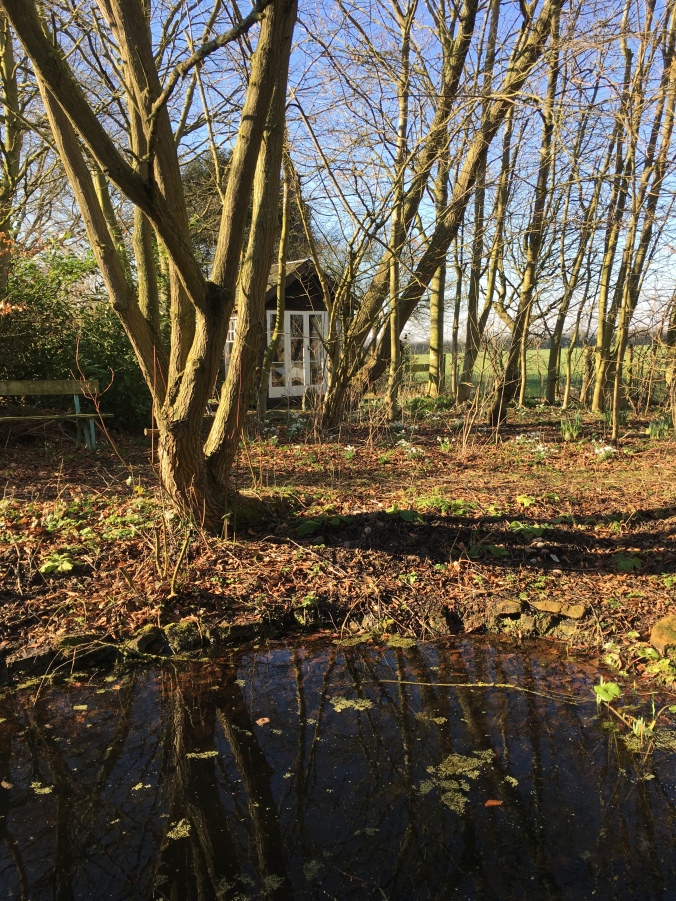
Snowdrops are fading fast. We’ve had the warmest February on record, which means they flowered early. But late-flowering varieties came into flower and withered within days.

Warm weather means an early start for daffodils. I’ve planted wild-type varieties here. Amongst the trees. Fancy doubles would look out of place.

Pots of Paperwhite Narcissi have been successionally flowering since November. For very little work, staggering the planting, a steady stream of flowers are produced for container and cut flowers. The scent is so welcome when it’s cold and dark.

New variety Snow Baby was an experiment this year. They are perfect for hanging baskets, window boxes and containers. Long flowering- whatever the weather. A little beauty. It’s earned its place on my order list for next spring.

Terracotta pots of white primroses and polyanthus are all around the garden today. Such a fabulous scent – and much loved by bees.

Pale yellow wild primroses are popping up all along the grass verge and our front garden. I haven’t used weed killer or feed on the lawns for years. Nature’s reward is a blanket of wild flowers starting with primroses, then wild violets, blue self heal, and in the damper areas, lady’s smock, cardamine pratensis, or cuckoo flower. I wonder if we’ll hear the cuckoo this year. We only heard it once last spring. Sad to think that in my Grandfather Ted Fould’s day, cuckoos were a common sound in the woods around his home. Now we are lucky to hear just one.
We have lost half of our cuckoo population over the past 20 years. I’m anxiously watching the BTO’s satellite tracking survey showing the position of tagged birds in the Congo rainforest. Soon they will set off for the long flight back to Britain, via the West African coast.
Climate change is causing the timings of the spring season to fluctuate. Evidence shows that migrant species are not advancing their arrival times sufficiently to keep pace with the change. One thing we can do is not spray our gardens so the cuckoo and other migrant birds find insects to eat when they get here. And I’ll leave our surrounding hedgerows tall and wild, to encourage all types of nesting birds.
You can learn more and watch the satellite tracking here https://www.bto.org/science/migration/tracking-studies/cuckoo-tracking
I’m joining the Propagator with his Six on Saturday meme. You can see more here :https://thepropagatorblog.wordpress.com/2019/03/02/six-on-saturday-02-03-2019/